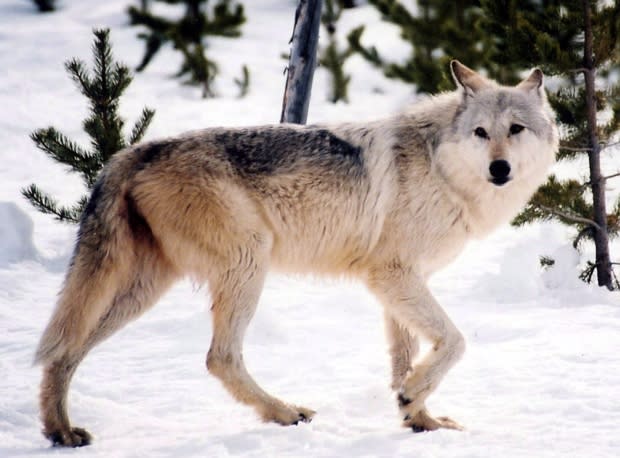How 31 Alberta wolves changed the natural balance of Yellowstone National Park
An eco-experiment that started with 14 Alberta wolves has shown just how powerful the laws of nature really are, says a University of Alberta ecologist.
In 1995, the wolves were introduced to Yellowstone National Park, almost 70 years after the last wolf in the park's original pack had been shot as part of a systematic program to get rid of them.
Another 17 wolves were released into the park one year later. And since then, the changes within the park have been nothing short of remarkable.
"They certainly have been able to restore the natural ecological processes that prevailed in the park prior to the extirpation of wolves," Mark Boyce, a U of A biological science professor, told CBC's Radio Active.
"And it's been dramatic."
Boyce has spent 40 years researching large mammals in Yellowstone, the oldest and one of the largest national parks in the U.S. This month, his paper on the rebirth of Yellowstone's flora and fauna was published in the Journal of Mammalogy.
Reintroducing wolves has changed Yellowstone's elk and bison populations, and has sparked the recovery of several tree species, including willow, cottonwood and aspen.
Original wolf pack systematically wiped out
To appreciate the domino effect on Yellowstone's ecosystem, you must first understand what happened in the past, said Boyce.
In 1926, the last Yellowstone wolf was shot, the culmination of a deliberate effort to get rid of the predators. The immediate result was that the park's elk population exploded.
"Within about 15 years the park decided they had to cull the elk to keep things in check," said Boyce.

Thousands of elk were killed each year until 1967, when political pressure grew to stop the annual hunt and begin a period of a natural regulation to see what would happen, he said.
"So the number of elk increased and increased, and every time they'd have a tough winter they'd have thousands dead elk on the northern range. And so the park recognized that they had to do something."
Enter the Alberta grey wolves.
The park's wolf population has been sitting at about 100 for the last decade. The elk population has dropped from a high of 20,000 to a current level of about 7,800 animals, Boyce said.
A combination of things happened around the time the wolves were relocated to immediately bring down the elk population, he said, including a bad winter, a heavy elk hunt and an upswing in grizzly bears preying on elk calves.
Fewer grazing elk means flora has come back
Things are still changing, he said.
Much of the elk herd has taken to leaving the park over winter, with only about 1,500 in the park's northern range. That has left room for the bison population to take over as the park's dominant herbivore.
"And bison numbers have been increasing, every year since wolf reintroduction. And now there are in the neighbourhood of 5,000 bison on the northern range."
With elk numbers down, the animals are not eating as much of the vegetation, allowing willow, cottonwood and aspen trees to flourish, he said. Grazing elk had eaten many trees down to the ground.
"Yellowstone has benefited from the reintroduction of wolves in ways that we did not anticipate," Boyce said in a news release.
"We would have never seen these responses if the park hadn't followed an ecological-process management paradigm — allowing natural ecological processes to take place with minimal human intervention."

